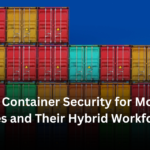Organizations of all sizes today are at risk from hackers, organized crime, scammers, malicious and accidental insider threats. Even with Firewall, NAC & DLP setup in place, it is very difficult for organizations to control the end device since it is controlled by users. In order to tackle this, organizations consider end-point protection as cybersecurity’s frontline.
Before Learning more about end-point security, check out:
- 5 Quick Steps To Enhance Your Enterprise Security
- 3 ways to secure your business data when employees are working remotely
- 5 most essential aspects of cybersecurity that every enterprise security tool must address in 2020
1. What Is End-Point Security?
End-Point security is a practice of securing the entry points of users into company assets, ex: Laptop, Smartphones, etc. from being exploited by malicious actors and campaigns. End-Point Security Tools are used to protect these entry points on a network or cloud by adding a layer of protection.
End-Point Security evolved from traditional antivirus software purposed to cater protection for devices from sophisticated malware and evolving zero-day threats.
2. Why End-Point Security Is Important?
While the data is the most important asset for any company, losing it due to improper security setup can be very harmful for the business, especially for the service-based companies where client data might also get compromised.
Businesses today are not only having to contend to the growing number of end-points but also need to cater to the increasing types of end-points. In addition to these, companies today also practice BYOD and Work From Home which makes it very difficult to tackle threats with perimeter protection or firewalls.
With increasing data, the threat landscape is becoming too large allowing hackers and scammers to come with new ways to intrude.
With security perimeters shifting undefinably, a traditional security solution is no longer adequate to prevent intentional or unintentional data leaks. To meet the special needs, companies need to have proper end-security set up so that the access devices can be protected.
3. How End-Point Security Works?
End-Point Security is set up to protect data and workflows associated with the individual devices that connect to an organization’s network. These systems are set up on cloud freeing all the risks and maintenance required to manage the assets locally while offering a faster, better way to access the data to the end-users. This can be achieved through an EPP tool like CACHATTO.
These tools provide system administrators a console installed on the network gateway or server to monitor and control the data flow. The client software is assigned to each endpoint which can be remotely managed or directly installed in the system. It can be both on-premise or hosted on the cloud.
EPP tools can detect malware and other threats and report back. In addition, these can also be stopped by locking the access or removing access to specific assets which are vulnerable.

(A typical endpoint security platform)
Some of the features of an End-Point Security tools include;
- Anti-malware and antivirus protection
- Malware and threat detection
- Safe browsing and protection
- Data classification and data loss prevention
- Integrated firewall setup to block hostile network attacks
- Email gateway protection
- Data exfiltration protection
With threats increasingly coming in through endpoints, centralized network protection and traditional setup is not going far enough for organizations today. Shifting security perimeters that lack clear definition require new layers of security through endpoint protection. This not only helps in possible breaches but also enables a clear data flow monitoring for organizations to better their processes.
Introducing CACHATTO: A unified security platform that provides provisional, virtualized and secure access to end-users by delivering right applications and data to the right user, across devices, at any time and location.
Learn More About Our Product here





